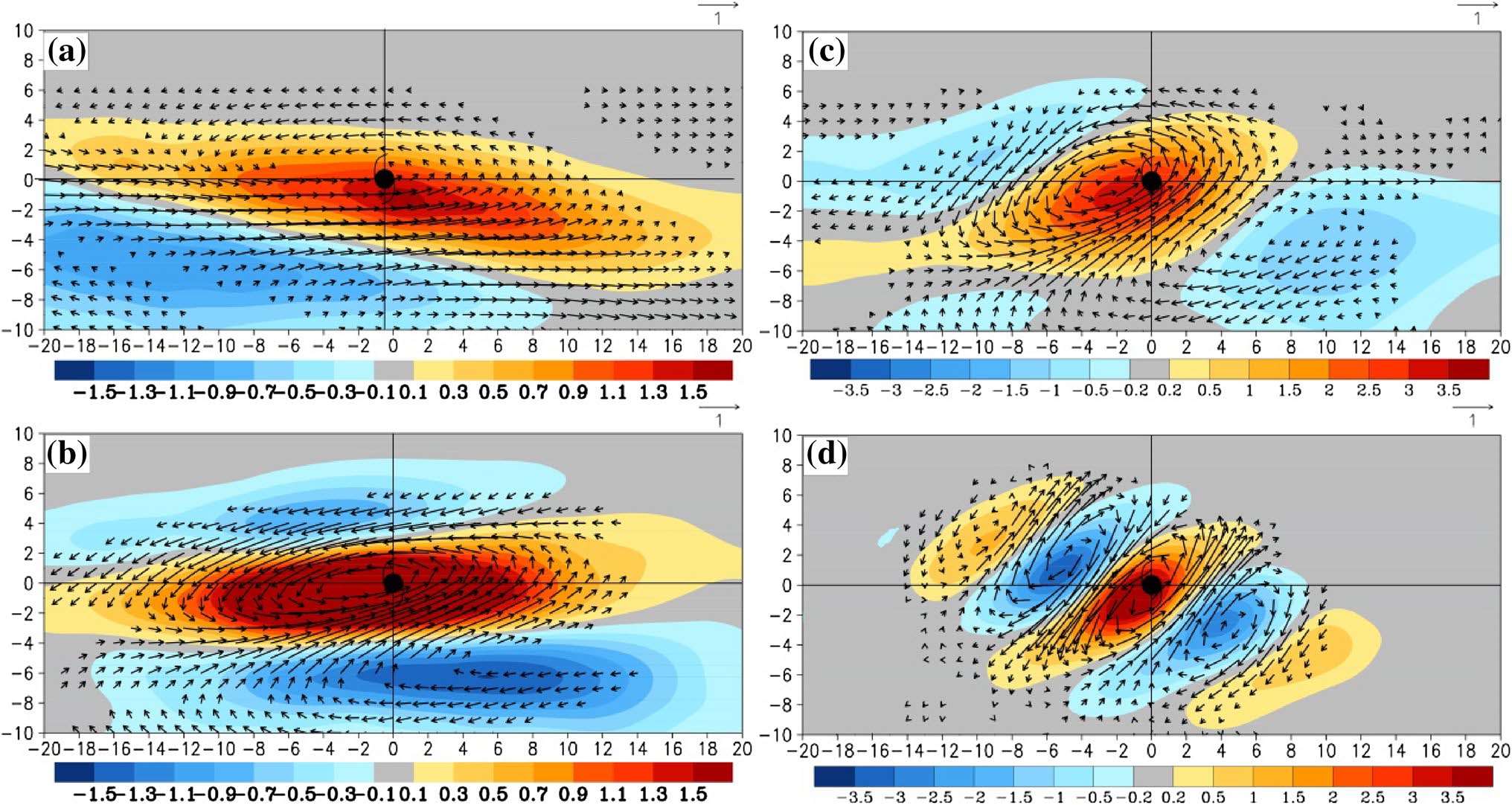Zhao, H., X. Jiang, L. Wu, P. J. Klotzbach, : Multi-scale interactions of equatorial waves associated with tropical cyclogenesis over the western North Pacific. Climate Dynamics, 52, 3023-3038 , https://doi.org/10.1007/s00382-018-4307-z
Key Points
Abstract
The tropical cyclone (TC)-centric approach developed in previous studies tends to overemphasize the direct impact of tropical waves and underestimates their large-scale modulation of western North Pacific (WNP) tropical cyclogenesis (TCG). To overcome these limitations, this study proposes a new approach based on empirical orthogonal function analyses to re-examine associations of multiple waves, including the Madden–Julian oscillation (MJO), quasi-biweekly oscillation (QBWO), convective equatorial Rossby (ER) waves, and synoptic scale waves (SSWs), with WNP TCG events. There is a close association between WNP TCG events (total of 273 TCs in this study) and SSWs (~ 64%), MJO (~ 68%), QBWO (~ 64%) and ER (~ 65%) waves. These suggest that SSW is critical for many TCG events, and all of these intra-seasonal waves significantly modulate TCG events. A majority of TCs (~ 79%) were found to be related to more than one wave type, indicating an important role for a combination of dynamic and thermodynamic conditions associated with multiple waves in TCG events. Further analyses show that SSW activity is strongly modulated by the MJO and ER waves, while the QBWO has no significant impact on SSWs. During convectively active MJO and ER phases, stronger SSW trains with more distinct southeast-northwestward aligned structures can be found compared to convectively inactive phases. Similar intra-seasonal modulation of the transition from the mixed Rossby-gravity waves from the equatorial central Pacific to the SSW trains over the WNP by the three waves is noted, with such transitions largely favored during convectively active MJO and ER phases.
Key Figure
FIG. 3. Composites of the filtered anomalies of 850 hPa-winds and TRMM rainfall relative to the TCG location and time for the MJO-associated (a), QBWO-associated (b), ER-associated (c), and SSW-associated categories (d). Only values of 850 hPa wind anomalies exceeding the 95% confidence level have been plotted.
Acknowledgments
H. Zhao thanks the support from the National Natural Science Foundation of China (41675072, 41730961), the QingLan Project of Jiangsu Province (R2017Q01) and the Priority Academic Program Development of Jiangsu Higher Education Institutions (PAPD). L. Wu acknowledges the National Basic Research Program of China (2013CB430103, 2015CB452803), the Natural Science Foundation for Higher Education Institutions in Jiangsu Province (15KJB170008). X. Jiang acknowledges support by US NSF Climate and Large-Scale Dynamics Program under Award AGS-1228302, and NOAA Climate Program Office under Awards NA12OAR4310075, NA15OAR4310098 and NA15OAR4310177. P. Klotzbach acknowledges funding from the G. Unger Vetlesen Foundation.
